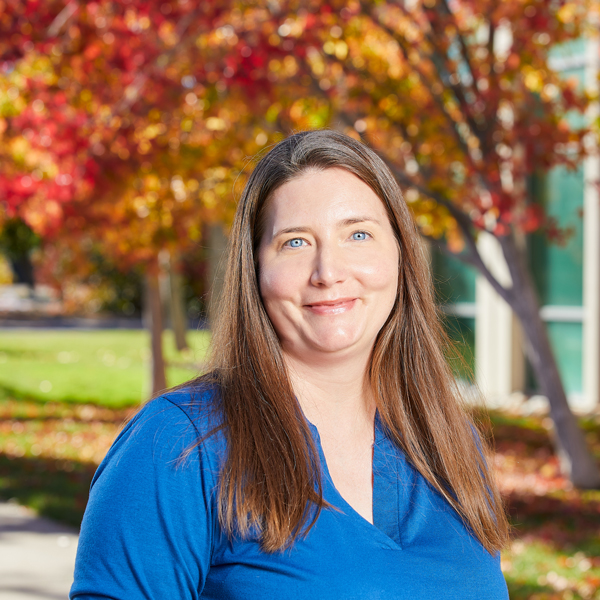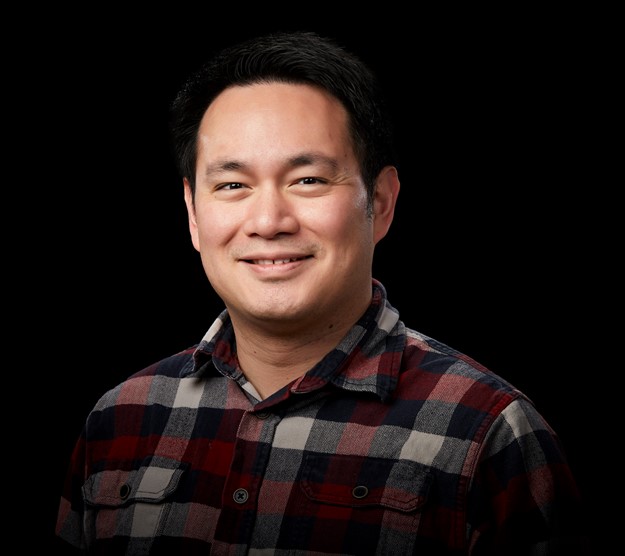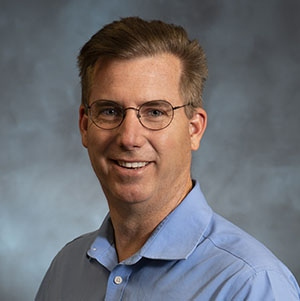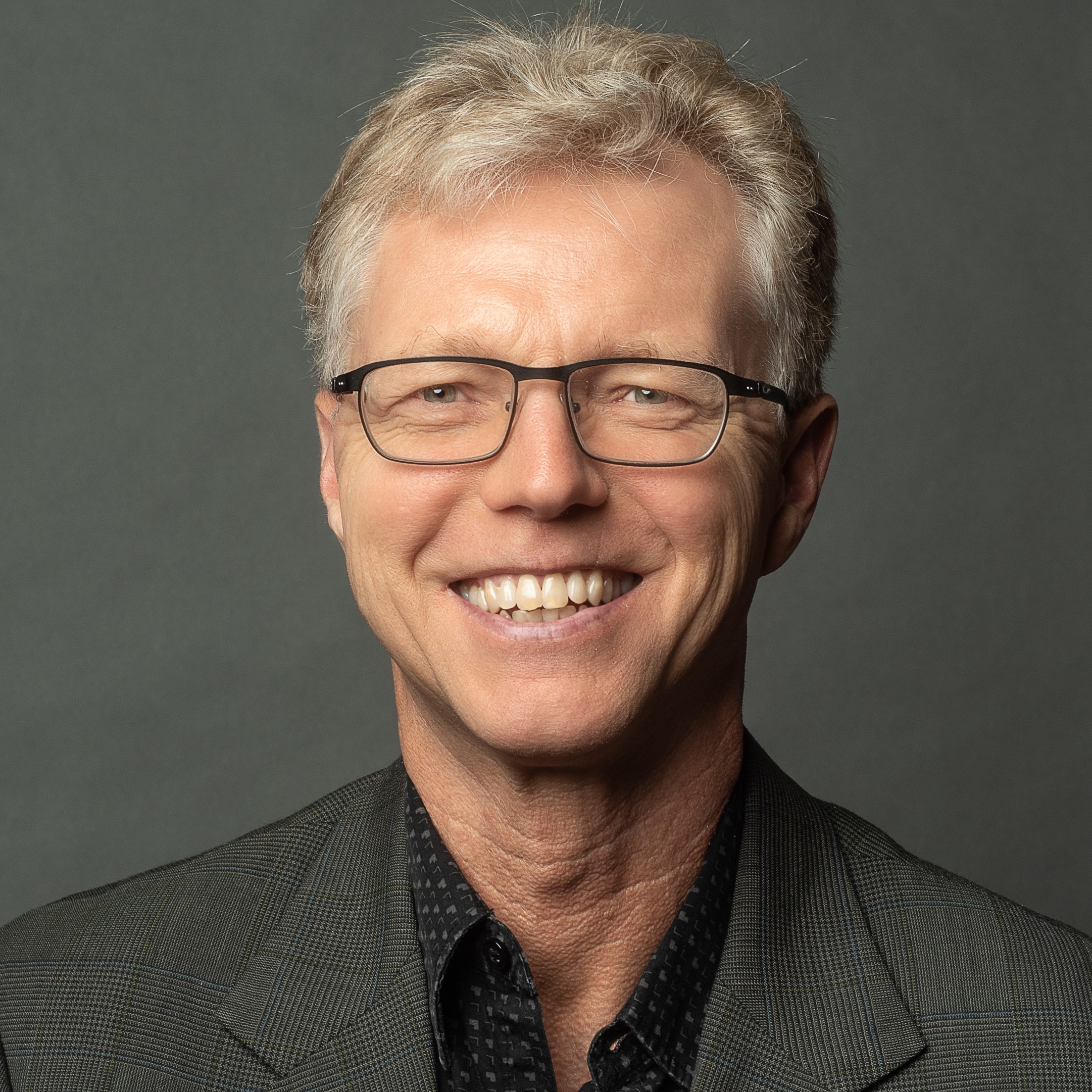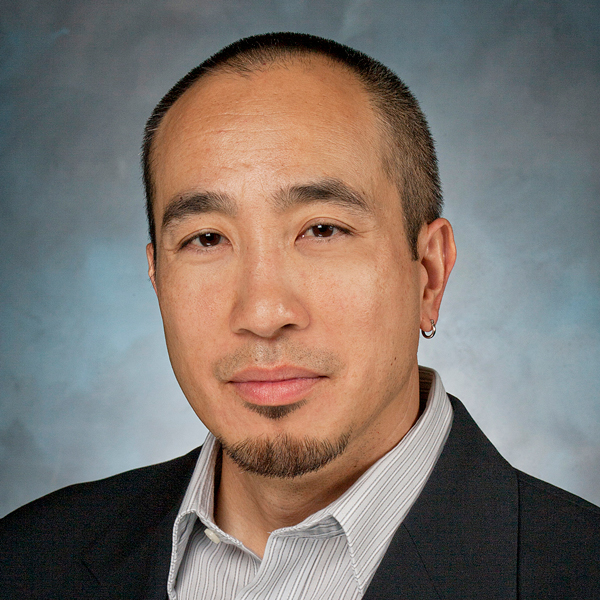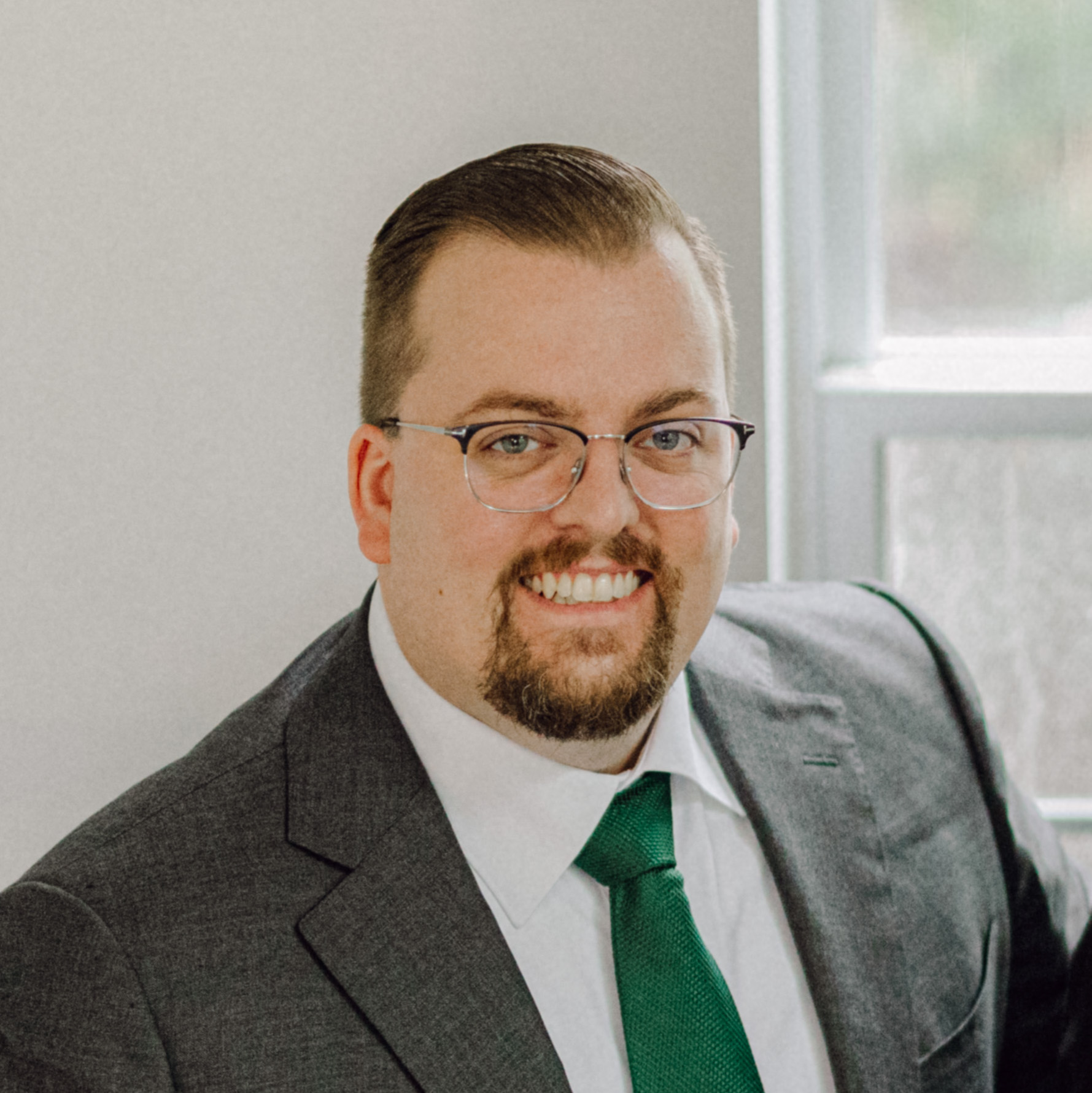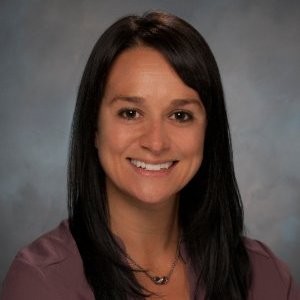Materials Science Division
Materials and Analytical Spectroscopy / Spectrometry Group
We are a diverse group of chemists, physicists, materials scientists, and chemical engineers who support a broad range of materials studies.
Our group broadly supports analytical materials analysis for the Forensics Science Center (FSC) and Strategic Deterrence (SD) Programs as well as the Materials Science Division (MSD).
We are experts in:
- Explosives analysis
- Polymer testing
- Stockpile surveillance
- Gas analysis
- Chemical analysis
- Materials and testing quality
We bring a wide range of expertise to materials analysis challenges. The group allows us to create connections, share opportunities, mentor and learn from one another, and facilitate teamwork toward our goals of materials analysis and assurance for a safer world.
The goals and applications of our research are to detect and mitigate chemical and biological threats and ensure a safe and functional nuclear deterrent. We focus on studying materials and testing to detect and model potential degradation from aging, materials interactions, or outside interference.
Our toolkit includes:
- Advanced manufacturing
- Polymer science
- Mechanical testing
- Radiation modeling
- Degradation science
- Chemical extraction
- Mass spectrometry
- Gas and liquid chromatography
- Spectroscopy
- Surface chemistry modeling
- Materials aging and compatibility
- Quality
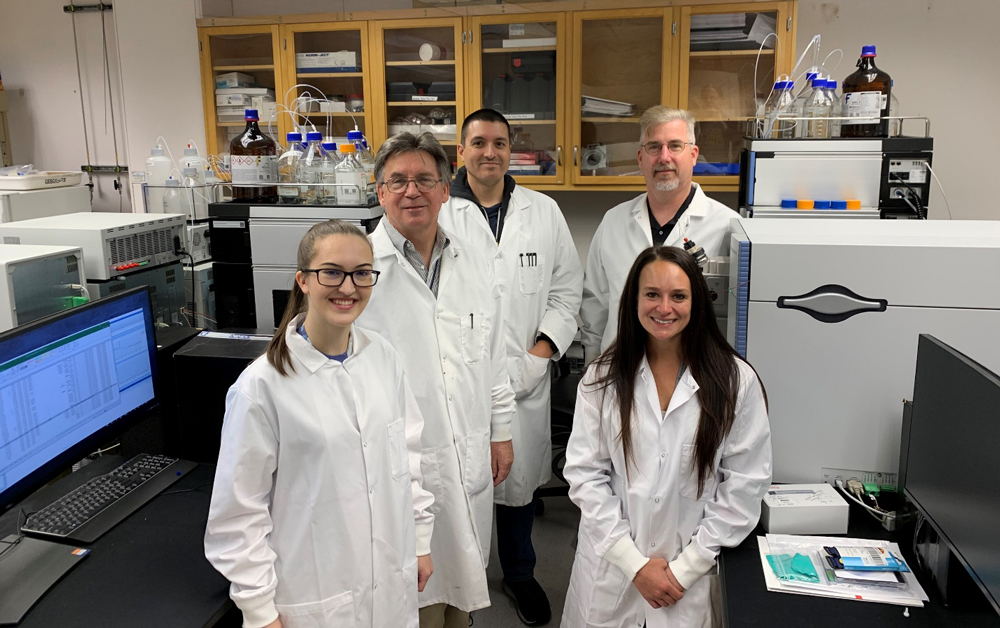
In the news
Research areas we support
High explosives analytics
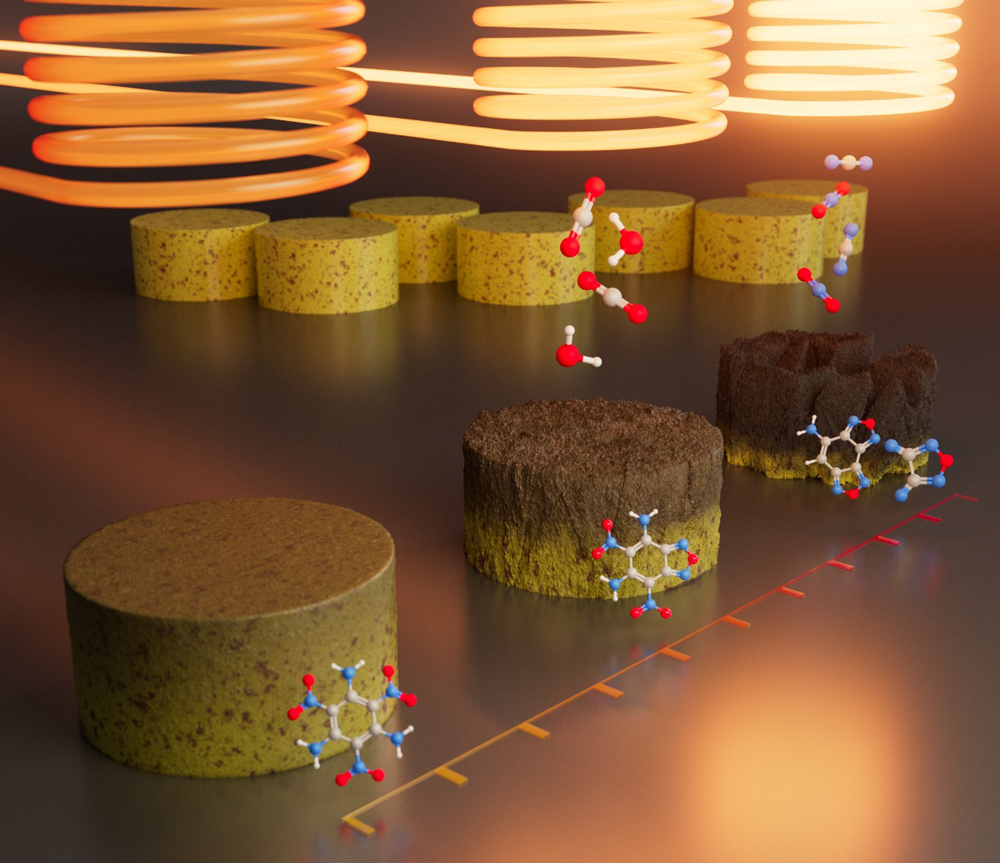
Degradation of 1,3,5-triamino-2,4,6-trinitrobenzene (TATB) with a heat treatment to artificially age the material. (Degradation is exaggerated.)
Since 2010, the High Explosives Analytics Laboratory (HE Lab) has employed a dedicated staff of scientists performing traditional and non-traditional analytical techniques using highly advanced instrumentation. The HE Lab supports the development and testing of energetic materials including:
- Small-scale synthesis research and development
- Scale-up production
- Accelerated aging, compatibility, and performance
- Certification and production
The inherent hazards of energetic materials require specialized facilities, personnel, and preparation procedures for analyses. The work scope and volume of samples (thousand per year) is expanding in areas related to research and development, performance, and certification/production.
We focus primarily on the trace level compounds within explosives as key indicators of chemical change. We continue to develop new sample preparation and analysis techniques to probe ever deeper into the chemical makeup of our samples.
Our techniques include:
- High-performance liquid chromatography
- Gas chromatography mass spectrometry, both liquid injection and thermal inlet
- Liquid chromatography mass spectrometry (high resolution and triple quadrupole)
- Ion chromatography
- Size-exclusion chromatography
- Karl-Fischer titrations
- Supercritical fluid chromatography
Forensic science
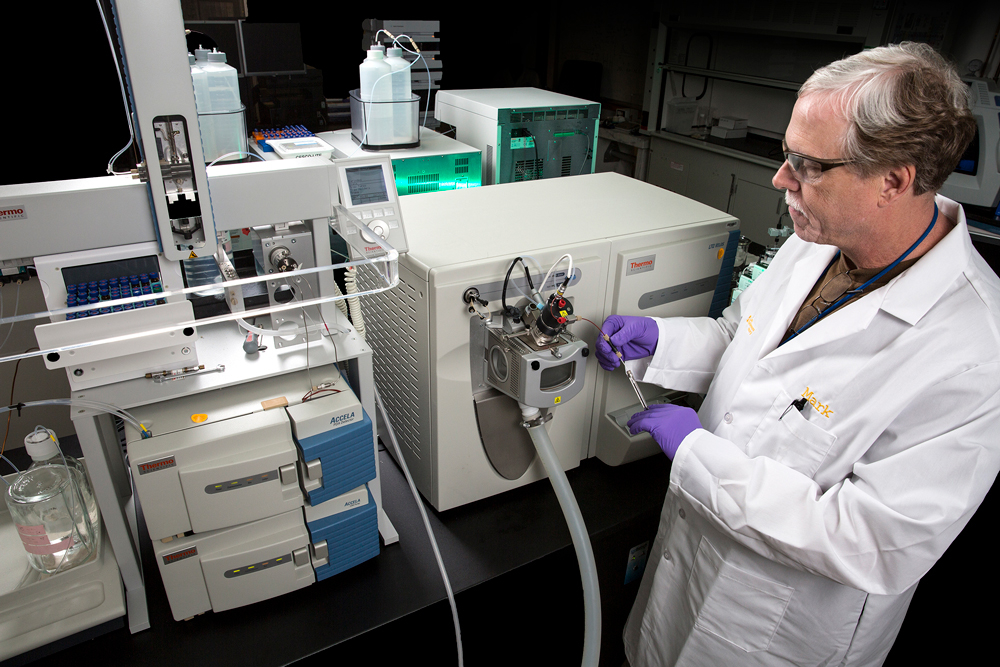
LLNL’s Forensic Science Center (FSC) is home to nationally recognized scientists and capabilities that support chemical, explosive, nuclear, and biological counterterrorism. The FSC delivers critical assessments and technologies to homeland security and intelligence communities, law enforcement, and health professionals. With international certification in handling and analysis of chemical warfare agents, explosives, and radionuclear materials, we collaborate with agencies responsible for monitoring and verifying compliance with international treaties.
Researchers supporting the FSC are experts in five thrust areas:
- Organic, inorganic, analytical, and nuclear chemistry
- Biological sample analysis
- Medical countermeasures
- Microfluidics
- Development of new forensic detection equipment.
FSC scientists routinely detect evidence of toxic chemicals at ultra-trace levels using state-of the-art analytical instrumentation. The FSC houses one of the most extensive collections of analytical instrumentation at LLNL, including:
- Gas, liquid, and ion chromatographs coupled with a wide variety of mass spectrometers
- Nuclear magnetic resonance
- Infrared and Raman spectrometers
With leading-edge capabilities, the FSC exploits emerging technologies to increase our understanding of trace compounds of interest and their interaction with complex environmental and biological samples.
Polymers
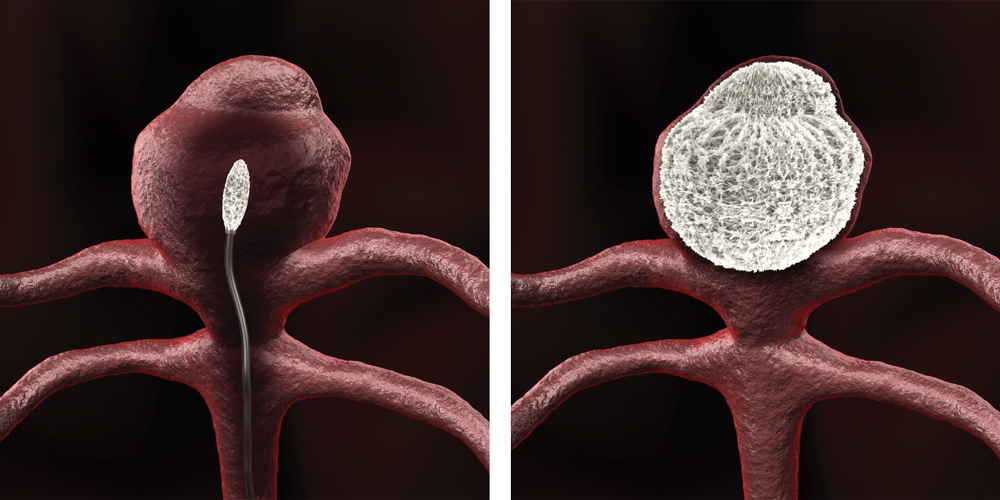
A conceptual intravascular device for treating an aneurysm using shape-memory-polymer foam. (left) Compressed shape-memory-polymer foams are delivered by catheter to an aneurysm sac within the brain. (right) Once it is activated by temperature change, the foam expands to match the sac’s contours.
Our researchers provide expertise in the design, development, characterization, and processing of polymeric materials to support polymer component and device applications across multiple programs. To support this work, we have extensive experience in polymer structure/property/applications relationships and leverage other onsite expertise or external collaborators.
Some of our research and development capabilities in this area include:
- Development of new materials for defense applications based on siloxane, urethane, and polyolefin polymers and processed via advanced manufacturing processes.
- Design, development, and characterization of shape memory polyurethanes and devices including therapeutic intravascular devices and implants.
- Characterization of thermomechanical properties of feedstocks and finished components via compression/tension mechanical testing, dynamic mechanical analysis, rheology, differential scanning calorimetry, and thermogravimetric analysis.
- Thermally accelerated aging studies for component lifetime assessment, including long-term prediction of mechanical function.
Quality
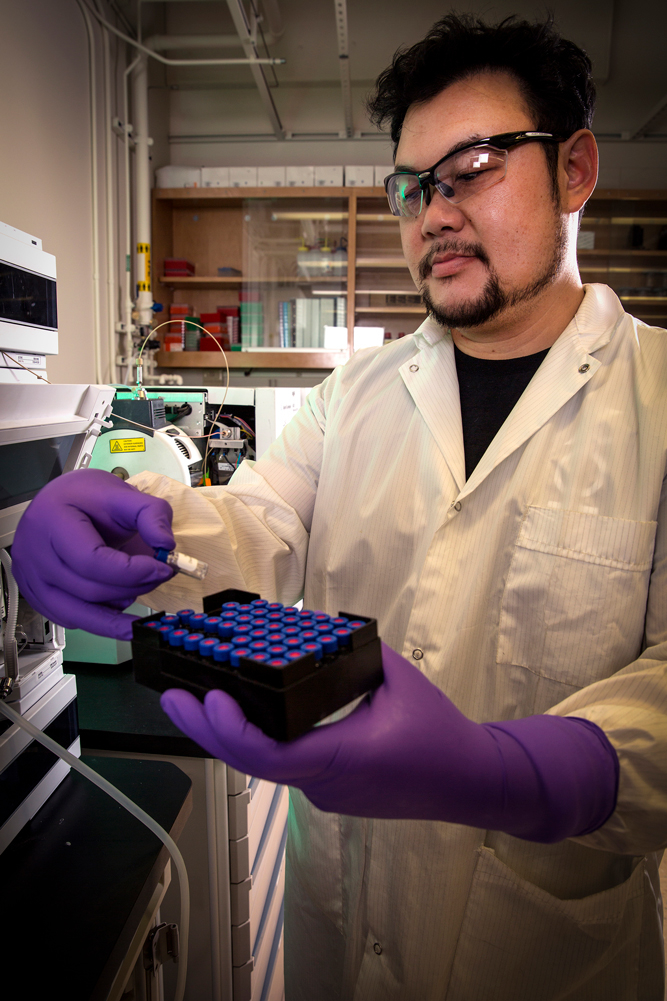
The International Organization for Standardization (ISO) determines standards for technology, industry, and other sectors. Laboratory testing and calibration requirements, known as ISO-17025, define competency benchmarks for quality assurance and quality control procedures. To achieve accreditation, laboratories must establish and follow a quality management system and consistently produce valid test results. Adhering to these standards not only increases operational effectiveness and efficiency, but also strengthens LLNL’s credibility in the areas where the highest standard of measurement traceability and rigor is requested.
As an example, the Forensic Science Center (FSC) has achieved ISO-17025 accreditation since 2003, allowing us to be among the 26 laboratories worldwide to support the mission of Organisation for the Prohibition of Chemical Weapons (OPCW). The same accreditation also enables the FSC to support various investigatory agencies in conducting internationally recognized chemical, explosive, and nuclear analyses.
In addition to the FSC, the ISO-17025 quality standard is also essential to all LLNL’s critical Measurement and Test Equipment (M&TE) to produce scientific results with quantifiable uncertainties for the day-to-day decision making that are consequential to ensure safety, improve performance, and limit unintended financial cost for the mission.
Our group has the unique knowledge and skills to support the growing demand for ISO-17025 quality management expertise within LLNL.
Gas analysis
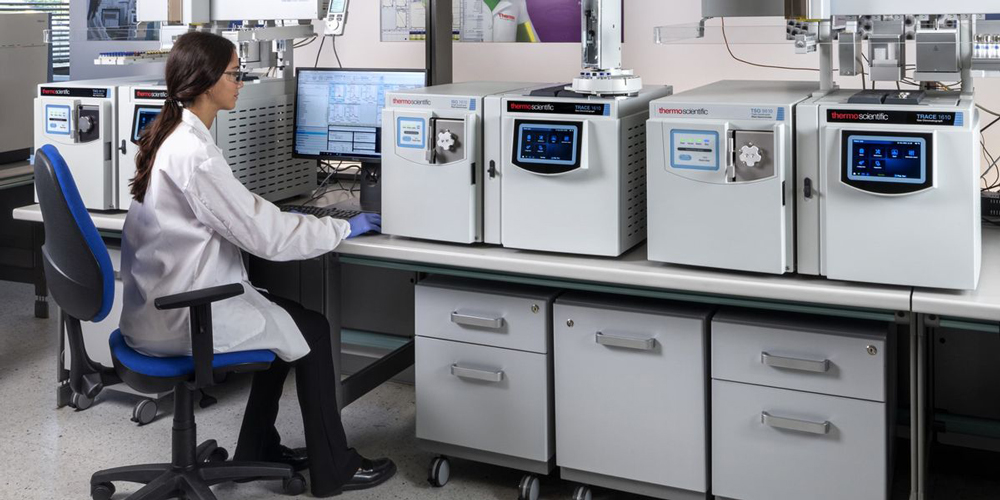
LLNL’s gas lab employs experts in material outgassing and gas acquisition experimental design, gas sampling, and advanced analytical instrumentation used to take and measure gas samples. Our group supports a variety of missions across LLNL, from building gas carts, material aging and compatibility experiments, simple and complex gas sampling, and analyzing materials aging experiments.
We analyze a wide variety of samples taken at the High Explosives Application Facility (HEAF), as part of stockpile surveillance activities, cross-site collaboration experiments, and one-off “What is this?” samples. This results in our gas lab managing 100s of aging experiments a year and analyzing 1000s of samples per year, a workload that continues to increase.
We specialize in the analysis of headspace gas samples; samples taken from sealed experiments/vessels that can indicate whether there is age related breakdown of a material or a chemical incompatibility within a group of materials.
Our instrumentation includes:
- Cryo-gas chromatography/mass spectrometry
- Magnetic sector mass spectrometry
- Selected-ion flow-tube mass spectrometry
Stockpile systems
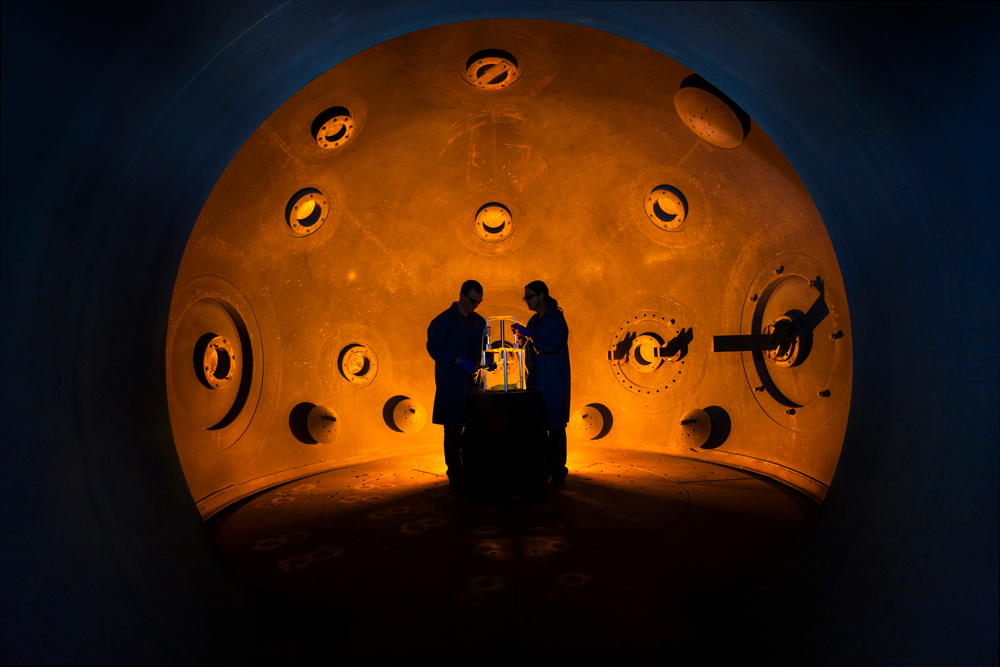
Our group offers comprehensive expertise in materials and component testing, aging, compatibility, and data analytics for LLNL’s stockpile systems. We serve as subject matter experts (SMEs) embedded within the Strategic Deterrence Directorate’s Stockpile Surveillance Group, providing scientific and technical oversight of yearly surveillance activities and data interpretation.
Our SMEs:
- Work closely with their component engineers and the production agencies to ensure that surveillance testing is performed to requirements.
- Work with the stockpile systems groups to ensure they understand the surveillance data.
- Serve as materials and component experts for anomaly investigations.
- Develop requirements and qualification testing for the modernization programs.
Many group members are actively involved in developing the next generation of surveillance diagnostics and serve as a valuable resource for all stockpile systems personnel, routinely providing their expertise for qualification activities, engineering evaluations, or expert peer reviews.
Our team
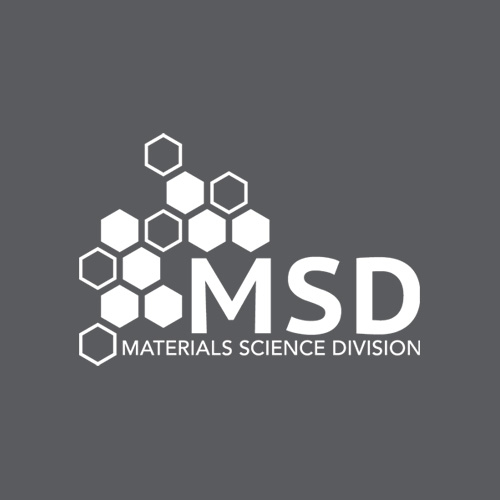








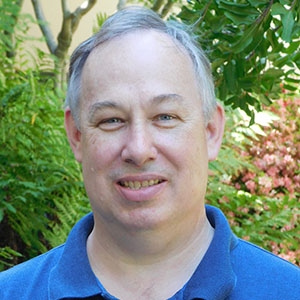
Our publications
Compressive properties of silicone Bouligand structures
MRS Bulletin, 2023
I.M. Van Meerbeek, J.M. Lenhardt, W. Small, T.M. Bryson, E.B. Duoss, T.H. Weisgraber
New Thermal Decomposition Pathway for TATB
Preprint, 2023
K.D. Morrison, A. Racoveanu, J.S. Moore, A.K. Burnham, B. Koroglu, K.R. Coffee, A.F. Panasci-Nott, G.L. Klunder, B.A. Steele, M.A. McClelland, J.G. Reynolds
Towards a heat- and mass-balanced kinetic model of TATB decomposition
Propellants, Explosives, Pyrotechnics, 2023
A.K. Burnham, K.R. Coffee, G.L. Klunder, A.F. Panasci-Nott, J.G. Reynolds
Hydriding of titanium: Recent trends and perspectives in advanced characterization and multiscale modeling
Current Opinion in Solid State and Materials Science, 2022
Y. Zhu, T.W. Heo, J.N. Rodriguez, P.K. Weber, R. Shi, B.J. Baer, F.F. Morgado, S. Antonov, K.E. Kweon, E.B. Watkins, D.J. Savage, J.E. Chapman, N.D. Keilbart, Y. Song, Q. Zhen, B. Gault, S.C. Vogel, S.T. Sen-Britain, M.G. Shalloo, C. Orme, M. Bagge-Hansen, C. Hahn, T.A. Pham, D.D. Macdonald, S.R. Qiu, B.C. Wood
Probing the Structural Effects of Hydrogen Bonding in 1,3,5-Triamino-2,4,6-trinitrobenzene (TATB): Experimental Evidence by 15N NMR Spectroscopy
J. Phys. Chem. C, 2022
H.E. Mason, C.A. Colla, A. Racoveanu, K.R. Coffee, A.F. Panasci-Nott, E.M. Kahl, and J.G. Reynolds
Standoff Detection of Oil and Powder Mixtures at 12 Meters Using a Tunable Quantum Cascade Laser-Based System with a Close Focus Telescope and Uncooled Infrared Detector
Applied Spectroscopy, 2022
J.C Carter, P.H. Paul, J.M. Ottaway, P. Haugen, A.M. Manuel
Trace Compound Analysis in TATB by Liquid Chromatography coupled with Spectroscopic and Spectrometric Detection
Propellants, Explosives, Pyrotechnics, 2022
K.R. Coffee, A.F. Panasci-Nott, B.J. Stewart, J.A. Olivas, A.M. Williams, J.G. Reynolds
Comparison of Spectroscopic Techniques for Determining the Peroxide Value of 19 Classes of Naturally Aged, Plant-Based Edible Oils
Applied Spectroscopy, 2021
J.M. Ottaway, J.C. Carter, K.L. Adams, J. Camancho, B.K. Lavine, K.S. Booksh
Constitutive Model of Radiation Aging Effects in Filled Silicone Elastomers under Strain
J. Phys. Chem. B, 2021
A. Maiti, W. Small, M. P. Kroonblawd, J. P. Lewicki, N. Goldman, T. S. Wilson, and A. P. Saab
Improving Prediction of Peroxide Value of Edible Oils Using Regularized Regression Models
Molecules, 2021
W.E. Gilbraith, J.C. Carter, K.L. Adams, K.S. Booksh, J.M. Ottaway
Uranium hydride corrosion. I New insights into the Condon-Kirkpatrick model of uranium hydride formation rate
Corrosion Science, 2021
A. Loui, N. Gharibyan, W. McLean
Uranium hydride corrosion. II Modeling spatially random growth using reaction and nucleation kinetics
Corrosion Science, 2021
A. Loui, N. Gharibyan, W. McLean
Age-aware constitutive materials model for a 3D printed polymeric foam
Scientific Reports, 2019
A. Maiti, W. Small, J.P. Lewicki, S.C. Chinn, T.S. Wilson, A.P Saab
Moisture outgassing from siloxane elastomers containing surface-treated-silica fillers
npj Materials Degradation, 2019
H.N. Sharma, J.M. Lenhardt, A. Loui, P.G. Allen, W. McLean, R.S. Maxwell, L.N. Dinh

